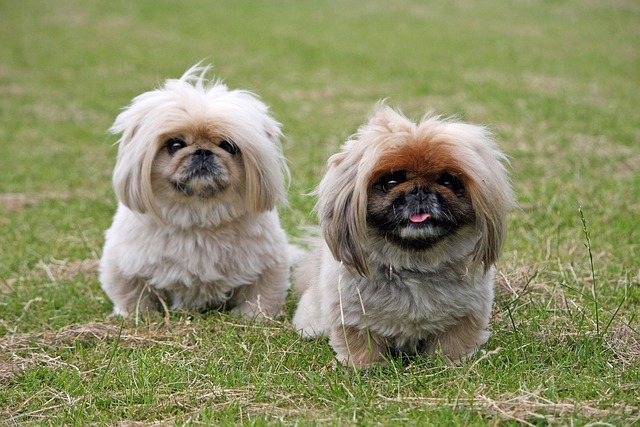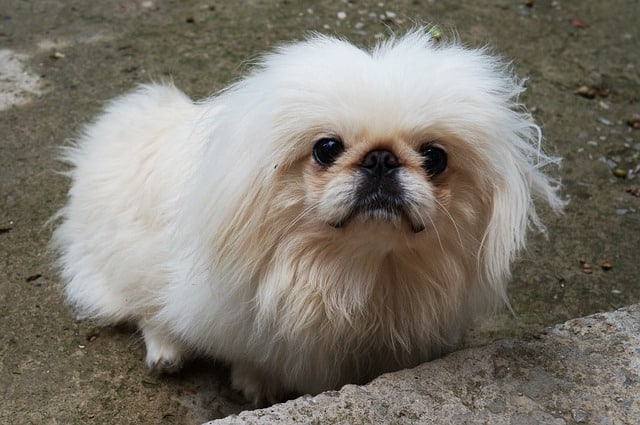The Pekingese is a distinctive breed known for its lion-like mane, independent nature, and royal roots. Originating in ancient China, Pekingese were once exclusive companions of emperors, treated with reverence and protected by the imperial court. Over time, as these regal dogs made their way into homes around the world, several myths have developed about their temperament, health, and needs. If you’ve ever considered adopting or owning a Pekingese, it’s time to separate fact from fiction. Here are five common myths about Pekingese that you should stop believing.
Myth #1: Pekingese Are Lazy Lap Dogs
At first glance, the Pekingese might give the impression of being a sluggish, couch-potato type of dog. With their compact size, luxurious coat, and often dignified demeanor, it’s easy to assume that they would be content spending all day lounging on laps. However, this is far from the truth.
Reality: Pekingese are alert, brave, and surprisingly active for their size. They were bred as palace guard dogs, and their watchful nature still shines through. While they certainly enjoy their relaxation time, they also have bursts of energy and curiosity that need to be satisfied. Pekingese love exploring their surroundings, playing with toys, and engaging with their human companions. Regular walks, interactive play sessions, and mental stimulation are crucial to keeping them happy and healthy. Far from being lazy, Pekingese thrive on having a balance between rest and activity, and they can even be agile when it comes to navigating their environment.
Myth #2: Pekingese Are Stubborn and Untrainable
One of the most persistent myths about Pekingese is that they are stubborn, difficult to train, and will only do what they want when they want. This misconception likely stems from their independent and sometimes aloof nature, which can be mistaken for obstinance.
Reality: Pekingese are highly intelligent dogs, but their independence can sometimes be misinterpreted as stubbornness. While they are not as eager to please as some other breeds, such as Golden Retrievers or Border Collies, this doesn’t mean they are untrainable. Pekingese respond well to positive reinforcement, especially when training is consistent, patient, and respectful. Because of their independent streak, it’s essential to start training early, using treats and praise to motivate them. They are capable of learning a wide range of commands, but they need to see a reason to do so—usually in the form of a reward. Owners who invest time and effort into understanding their Pekingese’s personality will find a willing and responsive student.
Myth #3: Pekingese Are Fragile and Delicate
Due to their small size and aristocratic history, some people believe that Pekingese are fragile dogs that require constant pampering and protection. They might look like delicate lap dogs, but this myth underestimates the breed’s resilience.
Reality: Pekingese are far sturdier than they appear. Though they are small in stature, they are robust and sturdy dogs with a muscular build. Historically, Pekingese were companions of royalty but also served as palace guard dogs, tasked with alerting their owners to potential intruders. Their bravery and confidence are deeply ingrained traits, and they can be surprisingly tough in both spirit and body. That being said, like any small breed, they do need to be handled with care, particularly when playing with children or larger dogs, but they are not as fragile as some might believe. Regular exercise, a healthy diet, and routine vet check-ups will keep them fit and strong.
Myth #4: Pekingese Are Aggressive and Don’t Get Along With Other Animals
Another common myth is that Pekingese are aggressive, especially towards other animals and children. Their confident and often bold personality, coupled with their protective nature, may make them appear aloof or even unfriendly to some.
Reality: Pekingese are not inherently aggressive, but they are highly protective of their family and territory. This protective instinct is a trait they’ve carried over from their role as palace guardians. While Pekingese can be wary of strangers and assertive around other dogs, proper socialization from an early age can significantly reduce any potential for aggression. Socializing your Pekingese with other pets, new people, and children from puppyhood ensures they learn appropriate behavior and boundaries. Pekingese can form strong bonds with other pets in the household, including cats, and are generally affectionate with children, as long as the children know how to interact with them respectfully.
Their assertiveness, when misunderstood, can lead to misconceptions, but with training and socialization, they can coexist harmoniously with other animals and people.
Myth #5: Pekingese Can’t Handle Hot or Cold Weather
Pekingese have a luxurious double coat that gives them a lion-like appearance, but this feature often leads to the belief that they are ill-suited to extreme temperatures. Some people think that their coat makes them too hot in the summer or that they can’t handle the cold in winter.
Reality: While it’s true that the Pekingese’s thick coat provides some insulation, this myth doesn’t tell the full story. Pekingese are brachycephalic, meaning they have short snouts, which can make them more prone to overheating in hot weather. Therefore, it’s crucial to take precautions during the summer months—providing plenty of water, avoiding strenuous activity during the hottest parts of the day, and ensuring they have access to cool areas.
However, their coat can offer them some protection in colder weather. With proper care, such as dressing them in dog coats or sweaters during extremely cold temperatures and monitoring them for signs of discomfort, Pekingese can handle cooler climates better than expected. Despite these weather sensitivities, Pekingese can enjoy outdoor time in most seasons, as long as they are not exposed to extreme conditions for extended periods.
Understanding the Pekingese Beyond the Myths
The Pekingese may look like regal, delicate dogs, but beneath their luxurious coats and independent personalities lies a breed that is sturdy, brave, and intelligent. Like any breed, they have their quirks, but many of the myths surrounding them stem from misunderstandings or overgeneralizations.
By debunking these five common myths, potential Pekingese owners can approach the breed with a more accurate understanding of their needs and personalities. Pekingese are not lazy, untrainable, or overly fragile—they are loyal, resilient, and full of character. With the right care, training, and attention, Pekingese make loving and dedicated companions that will stand by their owners through thick and thin. If you’re thinking about adding a Pekingese to your family, remember that these small dogs are far more than the myths make them out to be. They are spirited, courageous, and full of affection for those who take the time to understand them.


 Toledo, United States.
Toledo, United States.